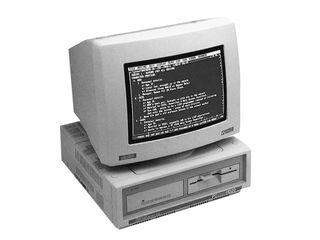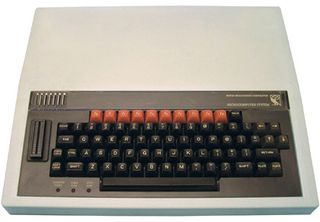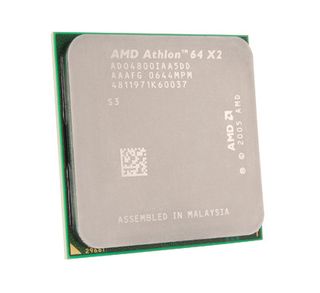
Almost 40 years ago, Intel announced "a new era of integrated electronics" with the advent of the 4004 processor.
While this might have been the first ever microprocessor, it's hard to think of it as one of the all-time greats. After all, it had a 4-bit architecture, it was clocked at 740kHz (that's 0.74MHz, or 0.00074GHz), and could access just 4kB of program memory, plus 5,120 bits of data storage.
By way of contrast, the smallest 'real' computers of the time were mini-computers typified by the DEC PDP-11/20, which was launched a year earlier. By using much smaller integrated circuits, but lots of them, it had a 16-bit architecture, a 1.25MHz clock, and could address 56kB of memory. The 4004 was a toy in comparison.
Of course, where it led, others followed – in their hundreds. But if the first ever microprocessor didn't have what it takes to earn a place in our hearts and minds, which of its successors did?
We've cast our nets wide to avoid the traditional Intel and AMD battles, and we're not looking for a chip for your modern PC either. Throughout the decades, dozens of semiconductor companies have tempted us with their wares, and many of the names here will be unfamiliar to those who think a computer always means a beige box running Windows.
Our top ten list includes no fewer than six chips that weren't born in the Intel or AMD stables. We've even included one processor that many thought was consigned to the history books but which is alive and well over 30 years on, as well as some chips that have never even been used in a computer. Read on to see our full list.
10. Intel Core
Get daily insight, inspiration and deals in your inbox
Get the hottest deals available in your inbox plus news, reviews, opinion, analysis and more from the TechRadar team.
Historically, most people have primarily judged processors by clock speed. This is perhaps a naïve view, but clock speed is certainly an important metric, and for over 30 years, it has continued to grow apace.
From 740kHz in 1971, it has increased tenfold each decade. Surely that should mean we have 10GHz chips in our machines? Sadly not.
In reality, the fastest clocked x86 chip was a 3.8GHz Pentium 4, released in 2005. What drew a halt to this incremental state of affairs was the burgeoning power consumption, which in the case of that 3.8GHz chip had grown to a massive 115W. By limiting the clock speed but using multiple cores instead, power-hungry chips would seem to be a thing of the past – one of Intel's Core 2 chips had four cores, each clocked at 2.267GHz (a total of 9.068GHz – of a sort) and it consumed just 45W.
The Intel Core wasn't the world's first multicore chip (that honour goes to the IBM POWER4 in 2001), nor was it the first multicore x86 processor (that was the AMD Athlon 64 X2), but to many people it epitomises the multicore approach. In the guise of the Core i7, it's today's fastest x86 processor.
9. POWER & PowerPC
The x86 architecture might be dominant on the desktop today, but at one time it had to compete with Alpha, PA-RISC, MIPS, Itanium and POWER. Initially, most of these processor families were used in high-performance workstations and servers, after which Windows was ported to several of them.
In recent years, many have been dropped or sidelined into applications such as games consoles. As a pioneering technology with a proud heritage and a rosy future, one of these processors makes it into our top ten.
Developed by IBM in 1990, POWER was a RISC (Reduced Instruction Set Computer) processor that was first used in the RS/6000 UNIX-based systems. With the PowerPC 620 launched in 1997, it reached the 64-bit milestone long before x86 chips.

POWER CHIPS: Roadrunner, the world's first petaflop computer, is built around POWER-based cell chips
For 11 years, in its PowerPC variant, it powered Apple Macs. However, perhaps its biggest achievement is that it's now found in many of the fastest supercomputers, including places three, five, eight and nine in the most recent TOP500 list, the league table of the world's supercomputers.
Intriguingly, the POWER-based Cell chip, of which the third-placed Roadrunner supercomputer contains 12,960, is also used in the Sony PlayStation 3.
8. MOS Technology 6502
In 1975, a now defunct company called MOS Technology introduced the 6502 processor. It went on to influence a generation.
Technically, it was nothing special – an 8-bit chip designed by the team responsible for the Motorola 6800, and similar to it in many ways. Where it broke new ground was in its cost. With a launch price of $25, considerably less than equivalent chips from Intel and Motorola, it started a price war.

BBC MICRO: Powered by the 8-bit 6502, the BBC Micro introduced a whole generation to modern computing
This then fuelled the home computer revolution. The 6502 first made its appearance in machines such as the Apple I and II, the Commodore PET, and the Atari. Here in the UK, it first made its presence felt in the BBC Micro. Introduced by Acorn in 1981 and priced at £235, this didn't have the same super-low pricing or mass market appeal as the likes of the Sinclair ZX81, but it had one important thing going for it.
Due to being featured in the BBC's Computer Literacy Project, it became established as the de facto educational computer and sold to schools by the millions. As a result, a whole generation was introduced to computing, and it was all down to the 6502.
7. Intel 80386
Each new x86 generation broke new ground, but the 80386 (the 386 to its friends) represented a quantum leap. The 4-bit chips lasted just a year before being toppled by their replacements, 8-bit architecture held the top spot for six years, and the 16-bit 8086 had just a seven-year innings.
When the 386 appeared in 1985, it introduced the 32-bit architecture that was the status quo for two decades. It wasn't until 2003 that 64-bit x86 chips entered the mainstream, and 64-bit computing still isn't universal today.
There was the instruction set to consider too. Estimates vary, but the 8086 is reckoned to have had around 120 of them, the 286 added around 17 more, and the 386 increased that number to about 200. Adding instructions doesn't mean a computer can do additional tasks, but transferring work from software routines to the processor's hardware can give a performance boost.
When you bear in mind that the 8086 launched at a clock speed of 5MHz, the 286 at 6MHz, but the 386 at 12MHz, you can see why it was the must-have chip of the 80s.
6. AMD Athlon 64
The AMD Athlon 64 takes its place in our league table as the chip that brought 64-bit computing to the masses. No longer would this headline figure be the sole domain of UNIX workstations and servers. As of 2003, desktop PCs could take advantage of a processor with 64-bit registers and 64-bit buses.
But what does that mean in practice? The first advantage is clear. Because data can be operated on in chunks of 64 bits instead of 32 bits, only half as many instructions have to be executed. That's an instant doubling in speed.

AMD ATHLON 64: The RISC chips were the first to move to 64 bits, but AMD's Athlon 64 brought it to the masses
Then there's the amount of memory that can be accessed. Here the increase is staggering, from 4GB with 32-bit chips to a theoretical 16 Exabytes (that's 16 billion Gigabytes) with 64-bit architecture. Most 64-bit processors – the Athlon 64 included – don't make all 64 bits of the address bus available on external pins, so they can't address this much memory in reality.
However, for the cost of a few pins, they'd be able to store 2GB for every person on Earth. That's why some experts reckon we'll never need to go beyond 64 bits – though we're not betting on it!
- 1
- 2
Current page: 10 most influential processors: 10-6
Next Page 10 most influential processors: 5-1Most Popular

